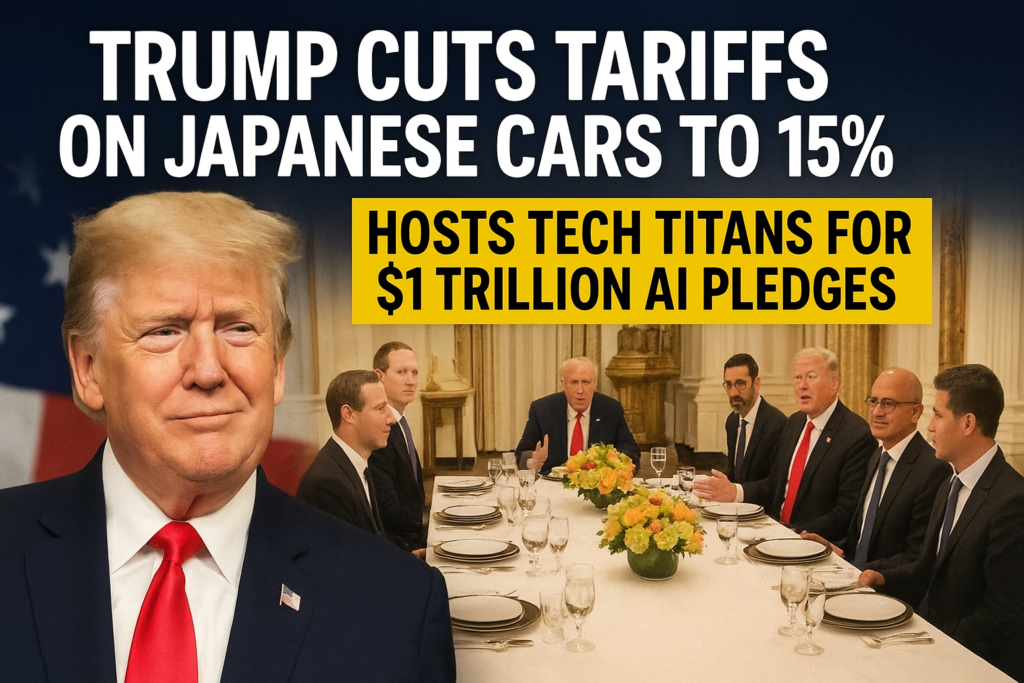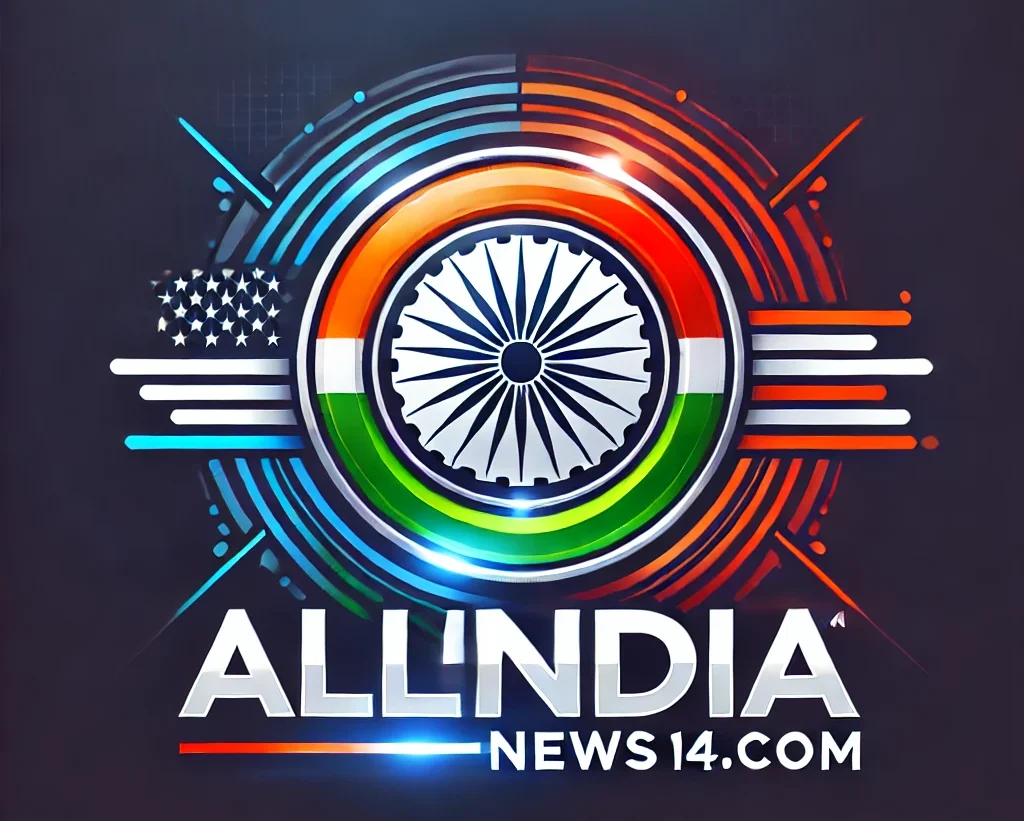U.S. President Donald Trump cuts tariffs on Japanese cars to 15%, offering relief to Tokyo. At the same time, he hosts tech leaders like Zuckerberg, Cook, and Nadella, securing over $1 trillion in AI and tech investment pledges.
Trump’s Bold Trade and Tech Moves: Tariff Cuts for Japan and Dinner with Silicon Valley Giants
A Major Shift in U.S.-Japan Trade Policy
Tariffs on Japanese Cars Slashed
In a move that caught both Wall Street and Tokyo off guard, U.S. President Donald Trump signed an executive order reducing tariffs on Japanese automobiles from a crushing 27.5% to a streamlined 15%. The order, signed on September 5, 2025, was made retroactive to shipments from August 7, instantly altering the trade landscape for one of Japan’s biggest export sectors.

Beyond Cars: A Broader Tariff Framework
The 15% cap isn’t limited to autos. Trump’s decision applies across a wider range of imports, bringing the U.S. closer to the European Union’s negotiated tariff ceiling. The timing is critical—Japan’s auto industry employs nearly 8% of its workforce, and the relief comes after years of pressure from Washington’s protectionist stance.
Economic Nuances in the Deal
Interestingly, the deal isn’t just about tariffs. The order also references Japanese investments in the U.S. valued at $550 billion. While flashy in number, analysts note much of this investment is tied to loans and guarantees rather than direct cash. Adding a twist, the agreement states that up to 90% of returns will remain within the U.S.—a clause that raised eyebrows among economists.
An Evening with America’s Tech Powerhouses
White House Dinner Turns Spotlight on AI
Just a day before the tariff announcement, Trump hosted an exclusive dinner with tech titans in the White House State Dining Room. The original plan was to gather in the Rose Garden, but rain forced the historic meeting indoors.
Still, the venue didn’t dim the energy. Trump opened with a grin, calling his guests “high IQ people”, and quickly turned the conversation toward artificial intelligence and investment.
Tech Leaders Promise Billions
The pledges were staggering:
Mark Zuckerberg (Meta) and Tim Cook (Apple) each promised $600 billion.
Sundar Pichai (Google) committed $250 billion.
Satya Nadella (Microsoft) calmly responded to Trump’s nudge with “Up to $80 billion per year.”
Trump’s reaction was short and sharp: “Good. Very good.”
Notable Absences and New Faces
Elon Musk, once a close ally of Trump, was noticeably absent following their recent public fallout. His seat, however, didn’t stay empty for long—Sam Altman of OpenAI took his place, symbolizing the rise of new AI power players.
A Star-Studded Guest List
The table was packed with tech royalty and innovators:
Satya Nadella, Arvind Krishna, Cameron Wilson, Bill Gates, Sergey Brin, Greg Brockman, Safra Catz, David Limp, Sanjay Mehrotra, Vivek Ranadive, Shyam Sankar, Alexandr Wang, and Jared Isaacman.
Together, they represented industries spanning AI, space exploration, cloud services, payments, and beyond.
Melania Trump’s Striking Words
Earlier that day, the AI Education Task Force, chaired by First Lady Melania Trump, set the tone. Her statement was as dramatic as it was clear:
“The robots are here. Our future is no longer science fiction.”
It was a message that framed the dinner discussion—not just about profits, but about the human impact of emerging technologies.
The Bigger Picture
Trade Meets Technology
Trump’s back-to-back moves—cutting tariffs on Japanese cars and securing trillion-dollar tech pledges—showcase a strategy that blends global trade diplomacy with domestic technological dominance. On one hand, he is easing trade tensions with Japan; on the other, he is pulling America’s tech giants closer to Washington’s orbit.
What It Means Going Forward
For Japan, the tariff cut is a lifeline. For America, the tech investments could redefine its innovation landscape. And for Trump, these actions reinforce his narrative: a president who negotiates hard abroad while rallying the nation’s biggest companies at home.
